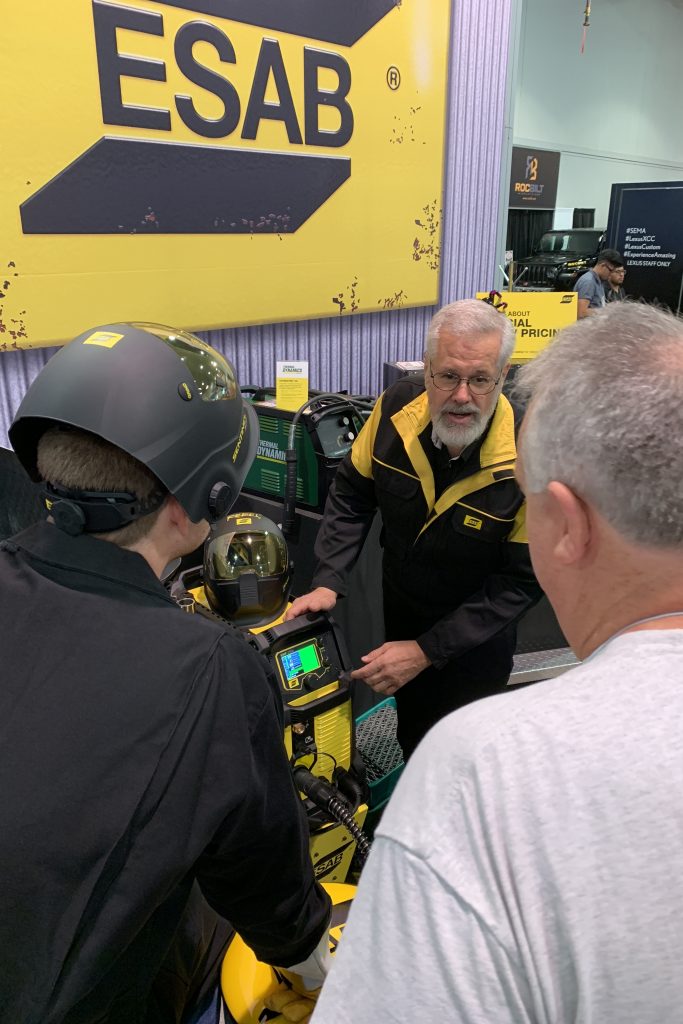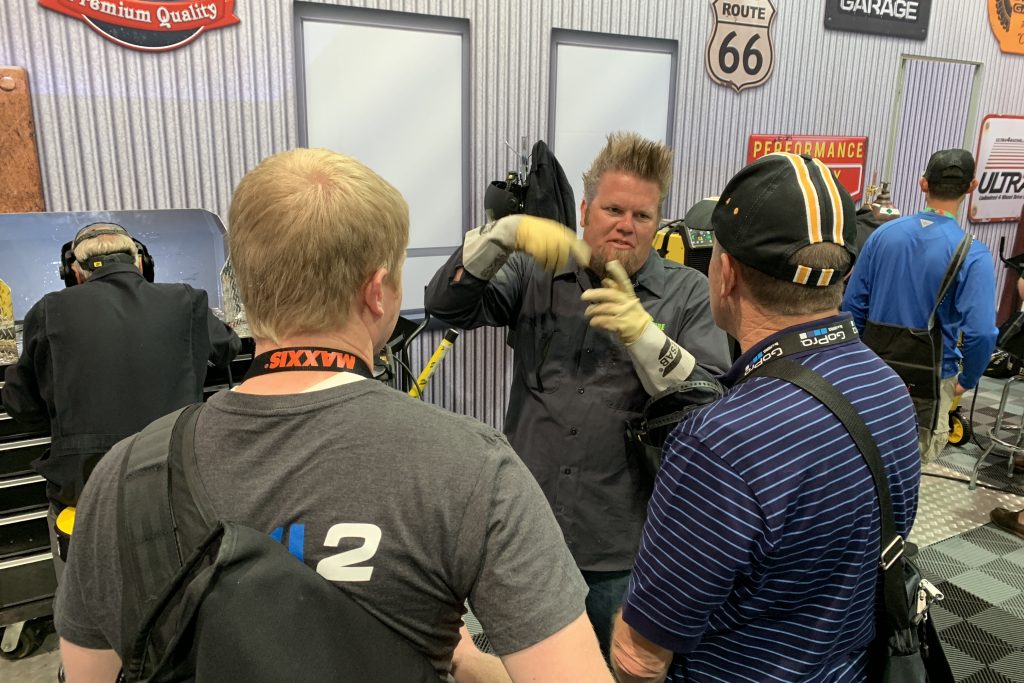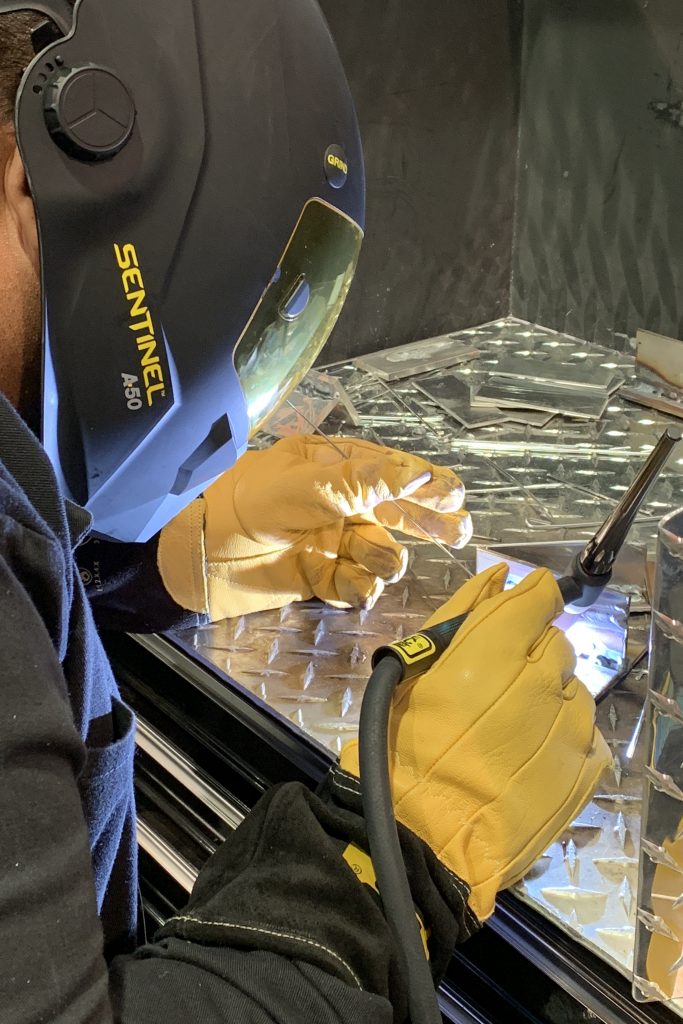 You can’t attend a trade show without hearing about trade skills, or, all too often, a lack of trade skills. Vocational training to develop trade skills among young people has faded, and nowhere is this decline observed and discussed like it is among attendees at a trade show such as SEMA (Specialty Equipment Market Association), one of the largest trade shows held annually at the Las Vegas Convention Center. SEMA attendees use their technical skills to build, modify and restore cars, and the lack of trade skills is readily apparent to them. One topic—the reintroduction of shop class—quickly sprouts into additional questions, such as how to get young people involved, when to start offering continuing technical education (CTE), how to overcome a negative stigma and how the community can help.
You can’t attend a trade show without hearing about trade skills, or, all too often, a lack of trade skills. Vocational training to develop trade skills among young people has faded, and nowhere is this decline observed and discussed like it is among attendees at a trade show such as SEMA (Specialty Equipment Market Association), one of the largest trade shows held annually at the Las Vegas Convention Center. SEMA attendees use their technical skills to build, modify and restore cars, and the lack of trade skills is readily apparent to them. One topic—the reintroduction of shop class—quickly sprouts into additional questions, such as how to get young people involved, when to start offering continuing technical education (CTE), how to overcome a negative stigma and how the community can help.
Talking to the Experts: A National Problem
Former Training Manager Bob Bitzky, who retired from ESAB Welding & Cutting Products after 46 years, discusses what he believes is the broader issue in a long line of problems.
“People wonder why manufacturing and industry are leaving the U.S.,” says Bitzky. “They’re leaving because we can’t find educated, skilled people to do these jobs. We’re about 250,000 welders short of the current demand. Bringing the jobs back to the U.S. is great, but who’s going to do the welding if you don’t have shop classes to get these young people interested?”
In other words, if we want to fill these jobs as part of building a healthier U.S. economy, there needs to be adequate education, and that starts with CTE programs. “High schools, even middle schools, all used to have industrial arts programs. Unfortunately, they moved these programs to separate vocational high schools,” says Bitzky. “Segregating CTE created a negative stigma that college-bound students go to one school and the skilled trades students go to a vocational high school.”
According to Bitzky, segregating like this creates the perception of a lower and upper class. “CTE needs to be part of the norm. It needs to be back in the high schools and grade schools. Colleges are doing it by creating STEM programs, but earlier is better. Welding is a craft, and that kind of passion develops over time. They need to learn that there are welding jobs out there and they pay well.”
Possibly even more important is getting the message out that more education — whether skilled trades or a four-year college — takes people further. “It took years to undo, and it will take years to effectively move CTE back into secondary schools.”
A CTE Exception
Teachers at Chandler High School in Chandler, Arizona feel their school is an exception to a diminishing trend. In fact, the school’s CTE program — the largest in the state — has 13 technical programs that lead to industry accreditations.
“For our demographic and location, the number of students who wind up going to a trade school is a lot higher than most,” says Christy Herndon, a culinary and early childhood teacher at Chandler. “Our district understood the need to expand CTE and offer other options outside of a traditional four-year program. If four years is not a student’s option, they can go straight from our program to obtain certification in their area of interest.”
 Chandler automotive technology teacher Roger VanWhy adds, “Many kids that take CTE are hands-on kids, not book people. However, by taking automotive classes, they can more easily relate geometry involved in a car’s suspension system.”
Chandler automotive technology teacher Roger VanWhy adds, “Many kids that take CTE are hands-on kids, not book people. However, by taking automotive classes, they can more easily relate geometry involved in a car’s suspension system.”
But what should other schools do to provide CTE? “You need to lobby for it,” says Herndon. “Show that it leads to actual jobs without having to wait four years. Students can speak to this.” Not only does the school write grants, but also the state encourages CTE in order to sustain the popular high school CTE program. “Many students go on to professional organizations such as SkillsUSA. That brings awareness, then people in the community start to ask for it,” says Herndon.
Herndon reports that she has about 85 percent of her students are employed in their field of study or furthering their education in their field after they graduate.
Ian Johnson, official ESAB spokesperson and host of streaming show Big Tire Garage, offers a Canadian perspective, one he believes CTE in the U.S. can benefit from.
“The Canadian model is similar to the European model,” says Johnson. “The skilled trades and apprenticeship program are key. At age 16 years, students can choose a traditional college path or move into an apprenticeship program. Canada invests heavily in vocational arts.”
Johnson is passionate about shop class. He was a mechanic for eight years and a shop teacher for eight years. “I was in a very, very tech-centric high school in Canada. We had six different shops and shop teachers, and we were in a town of only 8,000 people. We believed in shop.”
Waiting until college to teach young people trade skills is too late, according to Johnson. “They’re already spending money on an education,” says Johnson. “So, they’ve dismissed CTE without knowing whether it’s the best option for them.”
 For kids who don’t have CTE, Johnson recommends co-op programs, where students are able to work in shop environments through cooperative education placement. “You’re on the job with skilled tradespeople,” says Johnson. “It counts toward classes, but you’re out in a working environment. It’s an investment, but you have to find the kid who really has an interest in becoming a tradesperson.”
For kids who don’t have CTE, Johnson recommends co-op programs, where students are able to work in shop environments through cooperative education placement. “You’re on the job with skilled tradespeople,” says Johnson. “It counts toward classes, but you’re out in a working environment. It’s an investment, but you have to find the kid who really has an interest in becoming a tradesperson.”
Co-op Programs Work
Celebrating 42 years with ESAB Cutting & Welding, Jay Ginder, Sr. Applications Engineer, made a life-changing decision in his senior year of high school. Ginder, who had almost enough credits to graduate, was offered an opportunity to attend a half-day co-op program at a new trade school in the area. The idea of leaving at lunchtime to spend a half-day away from school was appealing. Ginder initially chose masonry but needed to pick a back-up; he chose welding.
“I’m celebrating 42 years of service with ESAB tomorrow,” says Ginder. “Welding tripped my trigger. It was something that I really enjoyed doing, and I made a profession out of it.”
As a result of the co-op program, Ginder became an experienced welder. When he hit a point of feeling underpaid, he went back to school for a degree in welding technology.
“We need to give the younger generation an opportunity to learn if they have a skill,” says Ginder. “If you’re not sure what you want to do, but you want to do something, you then have an opportunity to try a trade. After that, you can supplement with more education.”
Schools have limited budgets and need to seek out local industry support. “Schools are often willing to spend money on laptops for everyone, so someone has to fight on behalf of the trades,” says Ginder. “But it’s a battle because administrative people don’t understand how much time, effort and money it takes to offer trade programs, and welding is an expensive venture.”
Developing a trade skill can lead to boundless career options with the right educational background. “Artistic welding and structural welding are two very different things,” says Ginder. “You need to be qualified to weld certain things in a nuclear power plant, for example. You need to understand how something works when you think about what kind of welder you want to be. Science, math and reading will all help determine what career path you take.”
Mentorship goes a long way in helping young people move beyond some training and onto a career path. “A true apprenticeship program will support those who want a trade skill and are also serious about career goals,” says Ginder. “It will provide mentors for those who want to take their skills to new levels and apply them to other areas.”
 Early Inspiration
Early Inspiration
From teachers to engineers to Internet show hosts, a common thread exists when it comes to vocational training: start early. Early exposure not only leads to discovering hidden skills, but also to life lessons, diverse interactions and fulfilling careers. Brian Johnson, Account Manager and former Applications Engineer for ESAB Welding & Cutting Products, remembers his high school shop teacher as much more than someone who taught him welding.
“My shop teacher, Mr. Lynn Wyatt, inspired me to pursue a career in welding,” says Johnson. “He taught me not only the basics of welding, but also about life, being a good person and respecting others. That’s all part of what’s made me successful today. Young people need this kind of exposure to the trades.”
Ginder feels the same but reiterates a broader view as well: “Things have changed. It is a global market and bordering countries want our jobs. If we don’t start training people, then those jobs aren’t going to be here. They’re just not.”
Learning a trade before college sends young people on a highly coveted career path, one they may not find without early exposure. “You can’t take education away; knowledge is powerful,” says Ginder. “Still, if you recognize a talent for a trade early enough, your eyes become open to all the possibilities. Then, you can educate yourself accordingly.”





















